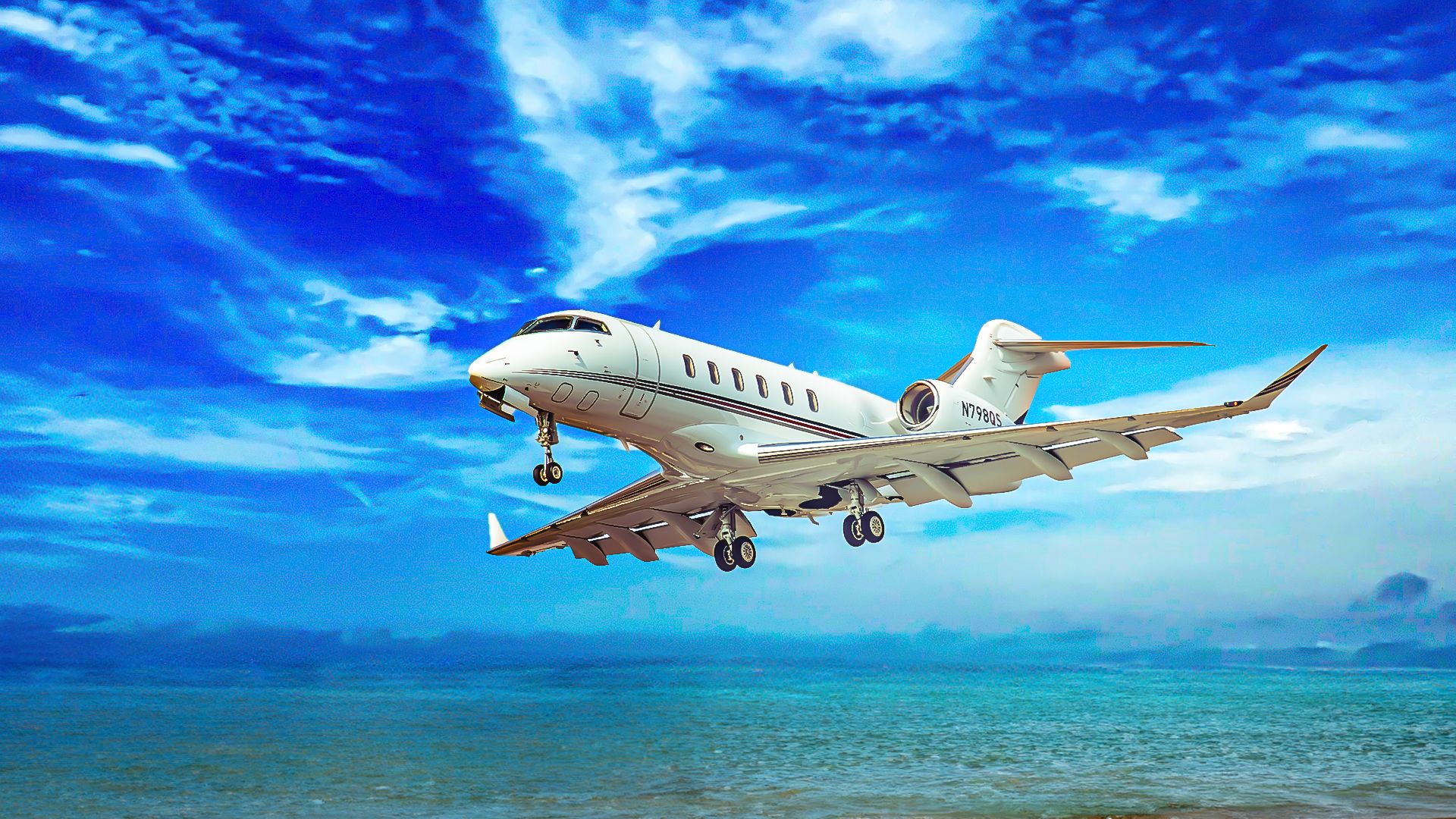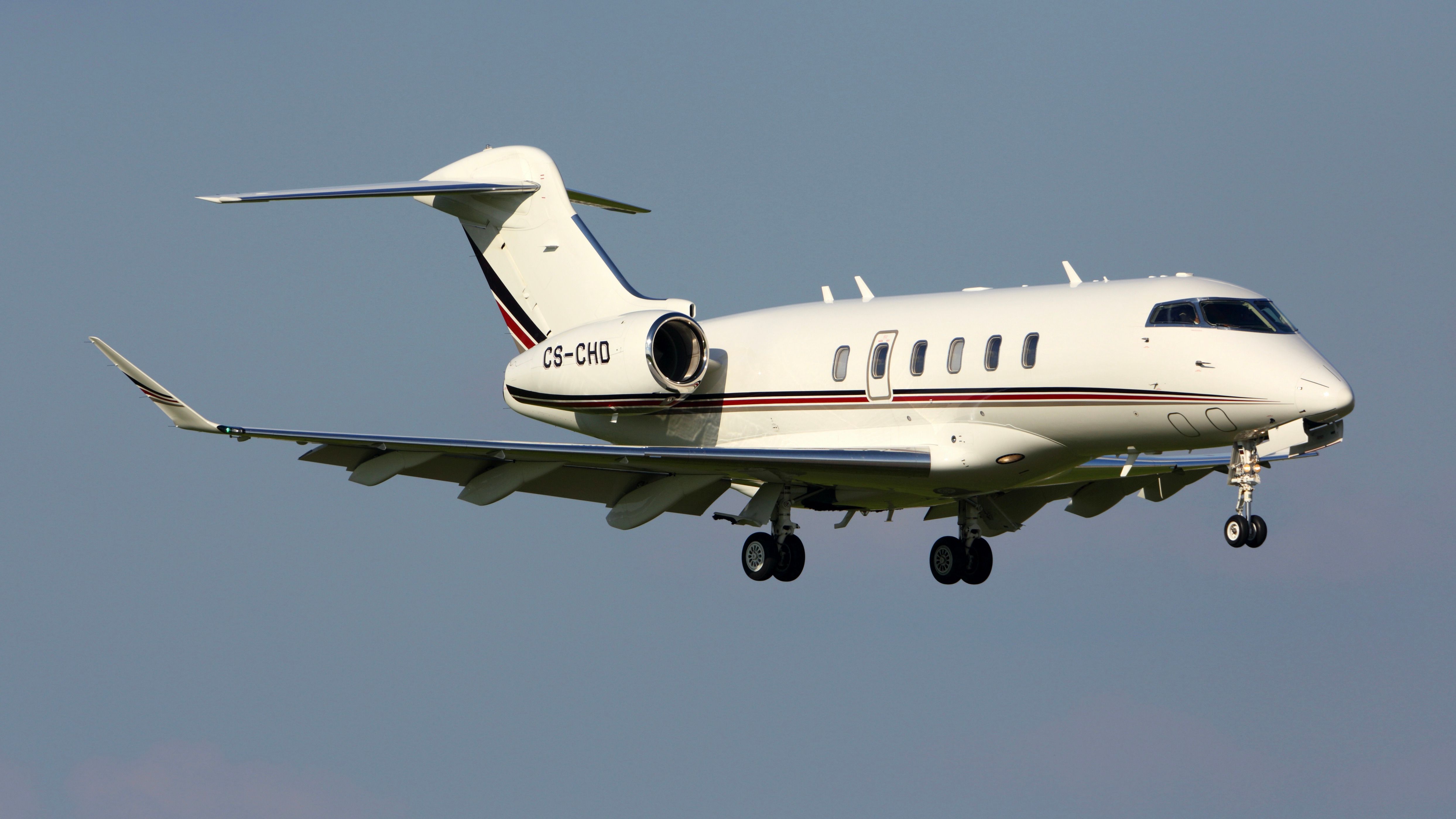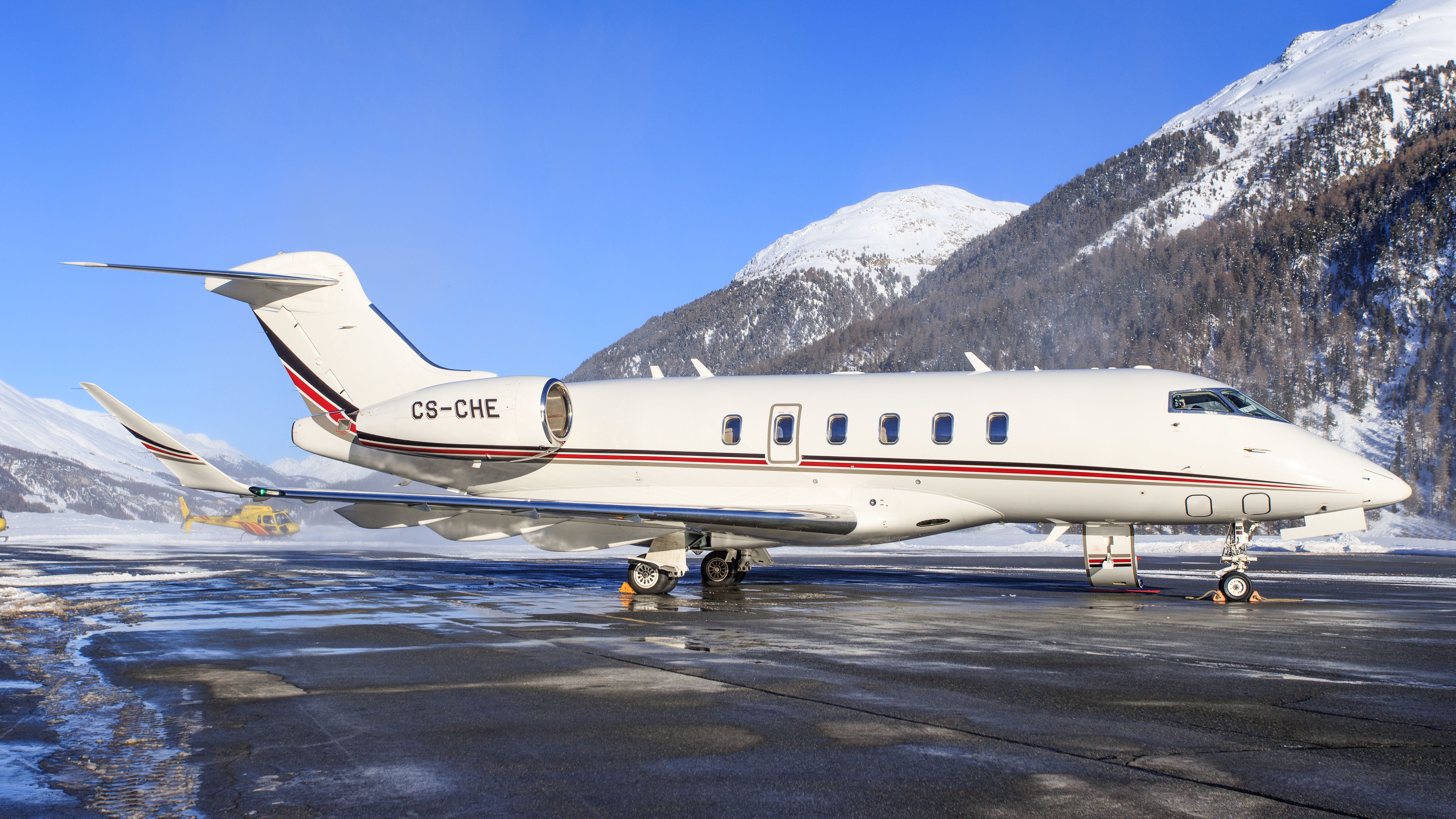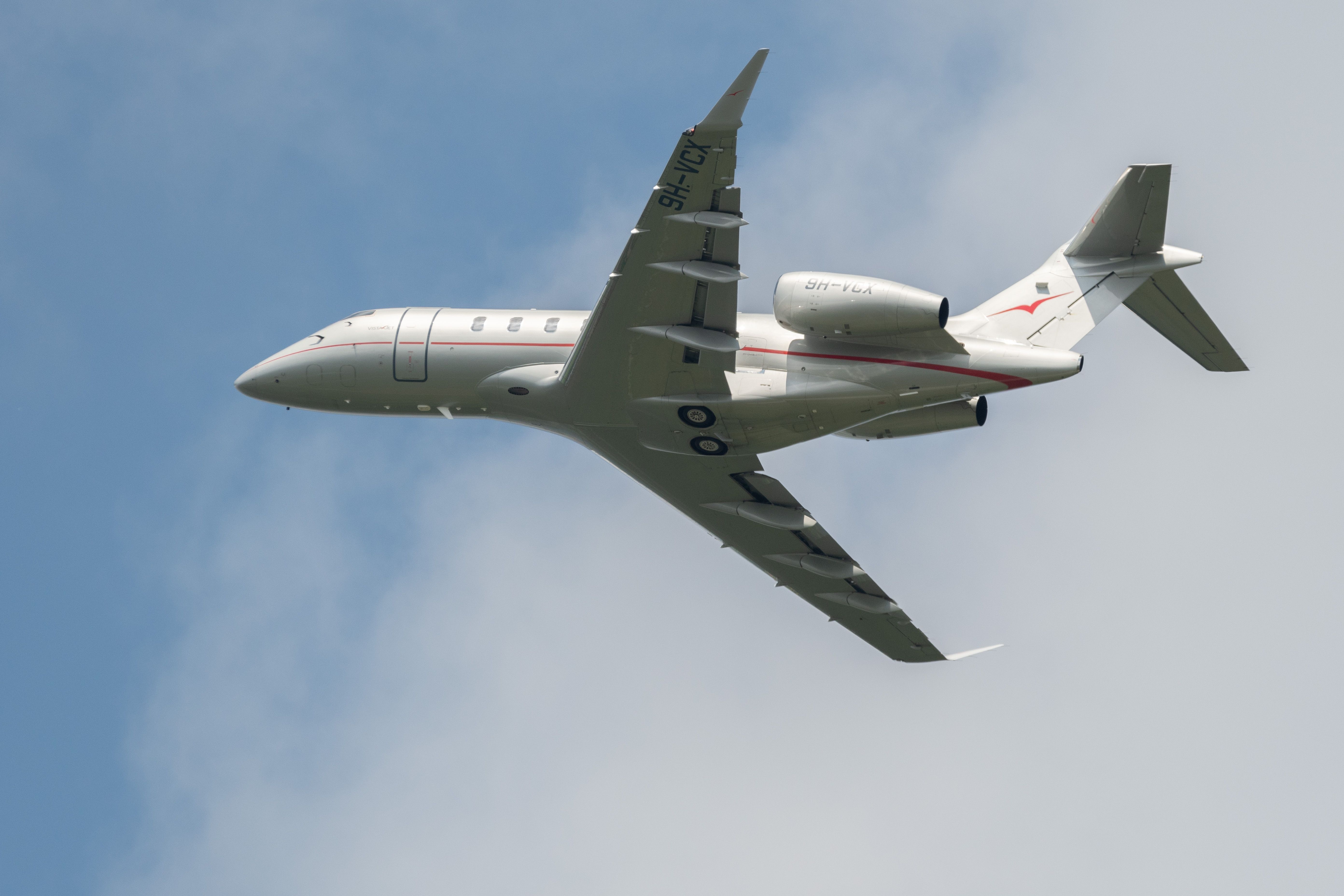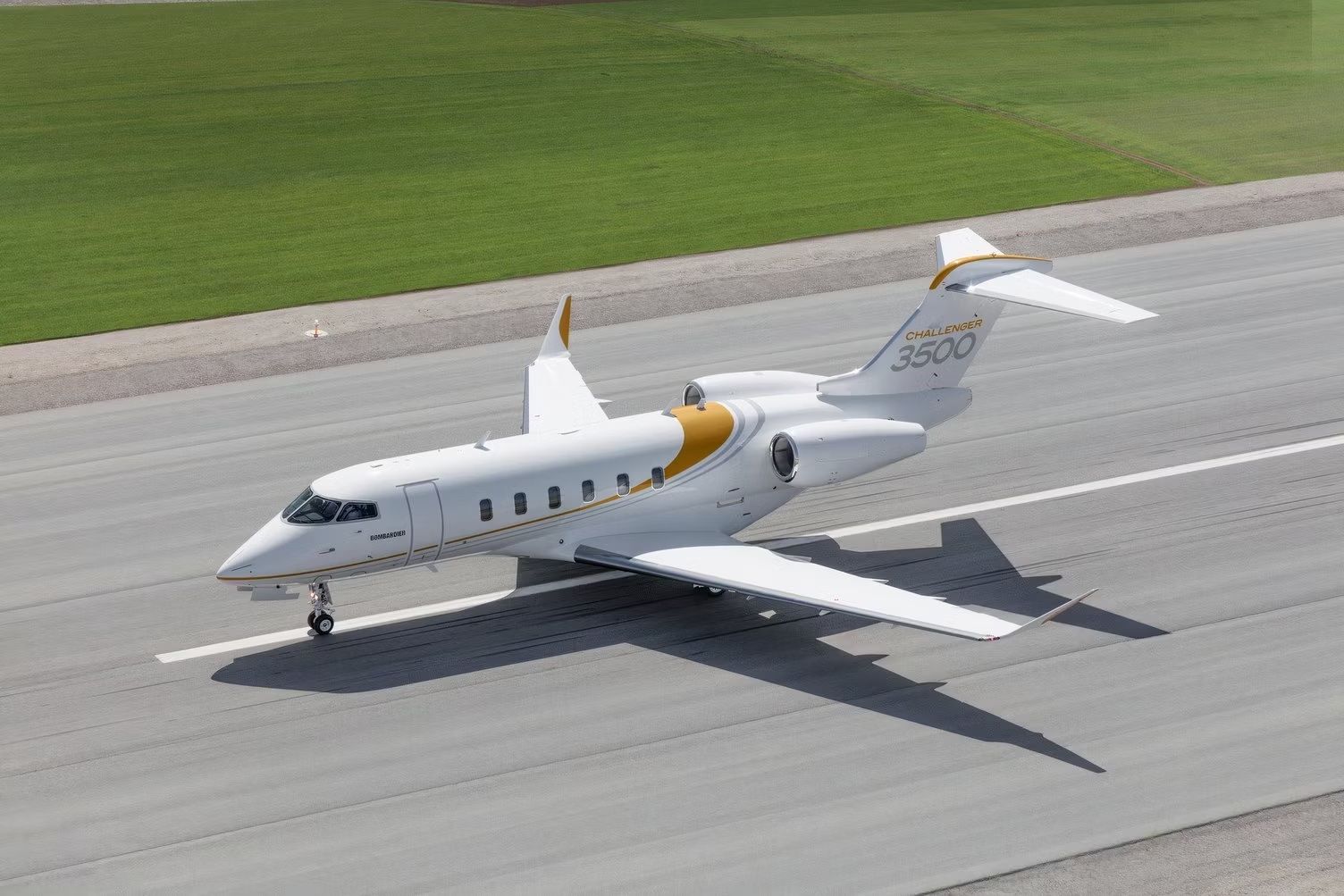Summary
- The Bombardier Challenger 350 is a popular business jet with excellent range and cabin comfort.
- Its introduction marked a commercial success, with innovative features setting it apart.
- Bombardier recently unveiled the Challenger 3500, boasting increased capacity and speed improvements.
The Bombardier
Challenger 300 family, which includes multiple different variants, is among the most successful mid-size business jets to be produced by the manufacturer. With impressive range capabilities, the sleek jet is capable of flying impressive distances nonstop, all while affording passengers the highest levels of luxury and comfort within its spacious cabin.
One of the most important variants within the family, the Challenger 350, has been rolling off of the Canadian manufacturer’s assembly lines for over a decade now and has been delivered to customers from across the globe. With improvements across the board over its predecessors, the Challenger 350 has solidified itself as a favorite among corporations and private individuals who are looking for a plane with its capacity and performance.
Photo: Fasttailwind | Shutterstock
Despite its similarity to other models within the company’s commercial lineup, there are a few things that undoubtedly make the Challenger 350
stand out. The aircraft’s taller cabin and improved range, both improved from the earlier Challenger 300, have made it suitable for families and those traveling longer distances. Let’s take a look at all that makes the Challenger 350 such a unique business jet.
Origins and development
In the 1990s, Bombardier Aerospace began to notice a capacity gap developing between its Learjet 60 and Challenger 604 models, presenting a market opportunity. Thus, the company’s engineers quickly got to work designing what was initially called the Bombardier Continental, an eight-seat aircraft that could travel up to 3,100 nautical miles and cruise at Mach 0.8.
The design, which was distinct from other Challenger variants, utilized components from multiple suppliers including Rockwell Collins and AlliedSignal, according to Flight International. Asian manufacturing partners such as Mitsubishi Heavy Industries and AIDC, a Taiwan-based supplier, were also contracted to help build the plane.
Photo: Mike Fuchslocher | Shutterstock
The Challenger 300, the earliest model of the series, made its debut at the Paris Air Show in 1999, and the first deliveries to customers were scheduled for 2002. However, the plane was hit with engine issues, which significantly impacted the delivery timeline, as production ground to a halt awaiting regulatory clearance.
The prototype of the Challenger 300 first flew on August 14th, 2001, and a second such prototype soon followed. The aircraft was first certified by Canadian regulators on May 31st, 2003, with American and European certification following not long after in the summer of that year.
A need for an improved model
By the time the mid-2000s came around, the Challenger 300 had proved a commercial success, with hundreds having been ordered since the plane first hit the market. Nonetheless, buyers were interested in an improved variant of the jet, one that could offer even more comfort and range.
As a result, the Challenger 350 was born, and the aircraft would make its first flight on March 2nd, 2013, and would be officially unveiled at the EBACE Air Show in May of that year. The upgraded model’s key features include all the following:
- A more luxurious interior
- 20% taller cabin windows
- A similar price tag (the plane’s list price was only $1 million more than its predecessor)
- More advanced Honeywell engines
- A strengthened wing with canted winglets
The Challenger 350 would first enter service with NetJets, which placed a firm order for 75 aircraft that included an additional 125 options, according to Aviation Week. The new variant would quickly go on to receive type certification in Canada, the United States, and Europe, all by September 2014.
Photo: Robert Buchel | Shutterstock
By 2018, Bombardier was delivering over 50 Challenger 350s every month and had achieved an impressive share of 58% for the super mid-size business jet market. In July 2019, the airline crossed a key threshold when it delivered its 300th Challenger 350.
The Challenger 350 is noticeably fast, cruising at Mach 0.8, and extends the range of its predecessor from 3,100 nautical miles up to 3,200 nautical miles. The plane also offers advanced avionics, with built-in advanced weather radar systems, improving maneuverability and turbulence avoidance. Here are some additional specifications for the Challenger 350:
|
Category: |
Bombardier Challenger 350 Specification: |
|---|---|
|
Service ceiling: |
45,000 ft (13,716 m) |
|
Fuel capacity: |
14,150 lbs (6,418 kg) |
|
Maximum takeoff weight (MTOW): |
40,600 lbs (18,416 kg) |
A look towards the future
With the Challenger 350 having hit the market over a decade ago, there have undoubtedly been advances in aerospace technology and shifts in customer preferences that would support an argument for developing a new variant. Well, Bombardier certainly agrees, as it unveiled the next generation of Challenger 300 series aircraft just a few years ago.
Photo: Bombardier
On September 14th, 2021, the Canadian manufacturer launched the Challenger 3500 program, the latest iteration of its family and a model that will carry the popular Challenger 300 series into the next two decades, according to an analysis from Aviation International News. The new aircraft will offer many improvements, including an even further adjusted cabin which will continue to improve the passenger experience. New cockpit technology will also be deployed, including automatic throttles that will further ease flying the business jet.
According to manufacturer Bombardier, the new model will increase capacity to 10 passengers, while also pushing the aircraft’s speeds above previous models, topping out at Mach 0.83. Lastly, the plane will again make a range improvement, with a maximum range of 3,400 nautical miles. The plane also boasts an advanced wing design, which offers refined aerodynamics that Bombardier claims will further improve how the aircraft handles turbulence.

